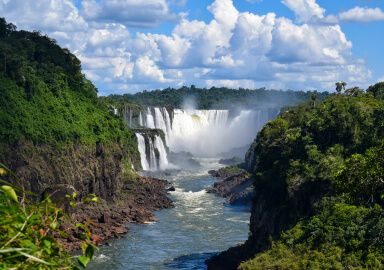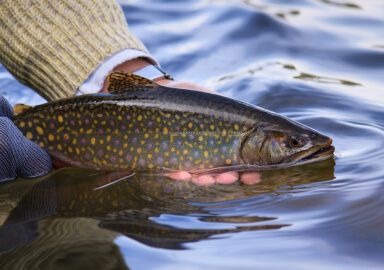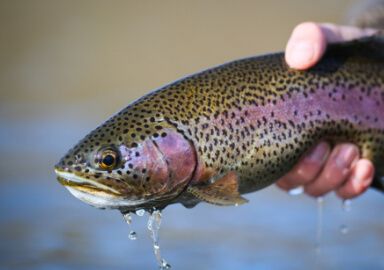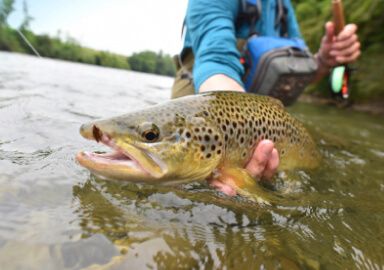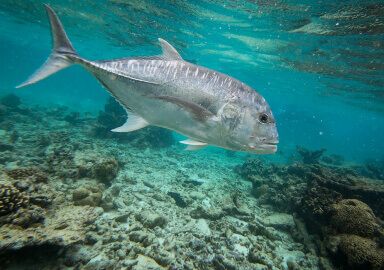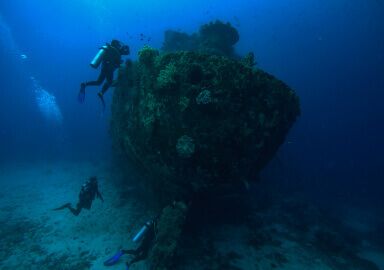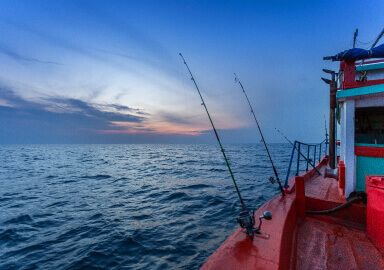River Fishing
Rivers have always been important for humans: they directed migration routes, helped trade, formed boundaries, and provided food - including fish.
View 239 listings
239
listings
–
price starting from
36
countries
195
fish species
–
to the nearest trip
About River Fishing
Rivers come in many sizes and shapes, and vary in width, depth, and speed. The difference between a stream, a brook, and a river is vague, arbitrary, and different from language to language. Any river that can support commercial ship traffic can be defined as big; one that can one you could wade across, or can cast your lure from one bank to the other, as small. Small to medium sized rivers have the advantage that almost all of their bodies are accessible from the shore or by wading, but for successful fishing on a real big river you better have a boat. On BaitYourHook.com, any fishing trip in running freshwater is a river trip, even though you may classify the “river” in question as a “stream” or “brook”.
The species you can find in a river depend not only on its geographical location, but also on its flow volume and speed of current. Slow, especially alluvial, rivers provide better conditions for underwater vegetation, which serves as food for such plant-eating species as bream, which in turn make a staple food for predators like pike. By contrast, in faster streams the fish has to rely on insects, and such rivers are preferred by trout and salmonids. And, all things being equal, the bigger the river the bigger the fish you may catch in it.
Mostly, river fishing is about freshwater species, such as catfish, pike, and bass, as well as those saltwater species, including such an iconic target for anglers as salmonids, that enter rivers for spawning. However, other saltwater species, up to and including the sharks, may enter estuaries of big rivers flowing into seas and oceans, and can be caught there as well. Almost every fishing technique can be used for river fishing, from fly-fishing and spinning to jigging and popping, as well as trolling and drift fishing if the river is big enough, and ice fishing if the river freezes over (beware that frozen rivers are usually more dangerous than frozen lakes, though).
The flow of water influences not only what kinds of fish may live in a river, but also the behavior of the fish. A successful river angler has the skill to read the current, and realize where the flow is rapid and where you can find areas of nearly stale water that some fish species use for shelter. Typically, the fish are more comfortable in the areas with slower current, where they don’t have to swim as hard to stay in one place as on the mainstream. However, the mainstream usually carries along the food that the fish feeds on. The border between the deep, still water and the current are often the sweet spot for many kinds of fish.
Fishing in rivers is special from the legal perspective as well. Unlike lakes, which in many countries may be private property, rivers are usually seen as the public domain. This is justified by the fact that any activity on one part of the river will invariably affect other parts, as well as the body of water the river flows into. To protect the common interest, the use of the rivers is almost invariably controlled by local or national governments, and fishing seasons, licenses, and catch policies may differ from those existing for lakes or offshore fishing. In many areas the law protects the right of access to rivers banks; in some, however, landowners may block it, so mind the property rights situation when planning a river fishing trip.


